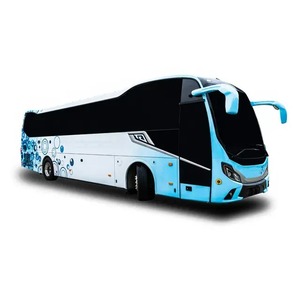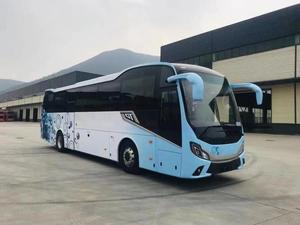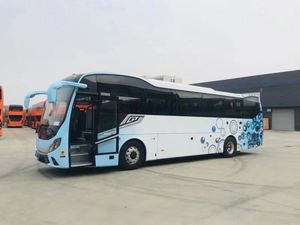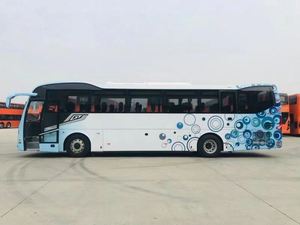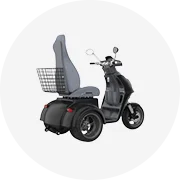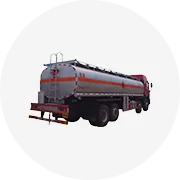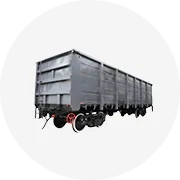Types of 12-Seater Buses for Sale
A 12-seater bus for sale offers a versatile transportation solution that can be tailored to a wide range of needs. These compact buses are ideal for small groups and organizations looking for efficient, comfortable, and cost-effective transport options. Understanding the different types available helps buyers make informed decisions based on their specific use cases.
-
Shuttle Bus
Designed for short-distance transportation within a defined area, shuttle buses are commonly used in environments such as airports, hotels, corporate campuses, and event venues. They provide reliable point-to-point service and often feature easy access doors and interior layouts optimized for quick passenger turnover.
Advantages
- Efficient for short trips
- Easy to maneuver in tight spaces
- Cost-effective for regular shuttling needs
Limitations
- Limited long-distance comfort features
- Not ideal for extended travel durations
Best for: Airports, hotels, resorts, business parks, event centers
-
Church Bus
Specifically designed to meet the transportation needs of religious communities, church buses are used to ferry members to weekly services, retreats, mission trips, youth events, and other gatherings. These vehicles often include practical amenities like overhead storage, durable seating, and accessibility features.
Advantages
- Supports community engagement
- Ideal for elderly or mobility-challenged members
- Can double as an outreach tool
Limitations
- May require additional insurance
- Maintenance responsibilities increase with frequent use
Best for: Churches, religious organizations, community outreach programs
-
Medical Transport Bus
This type of 12-seater bus is specially equipped to transport patients to and from medical facilities. It's commonly used by healthcare providers, clinics, and assisted living centers to offer non-emergency medical transportation for individuals who may have difficulty traveling independently.
Advantages
- Improves patient access to care
- Safe and regulated transportation option
- Can accommodate medical equipment if needed
Limitations
- May require specialized licensing
- Additional training for drivers may be necessary
Best for: Healthcare providers, senior centers, rehabilitation facilities
-
Tourist Bus
Tourist buses are perfect for guided sightseeing tours in cities, historical landmarks, and popular tourist destinations. These buses often feature large windows, onboard commentary systems, and comfortable seating to enhance the travel experience for visitors.
Advantages
- Enhances tourism experiences
- Flexible for group bookings
- Can operate seasonally to match demand
Limitations
- Requires route planning and tour coordination
- Seasonal fluctuations may affect profitability
Best for: Tour operators, city guides, school field trips, sports teams
-
Luxury Coach Bus
Luxury coach buses offer premium features such as reclining seats, climate control, onboard restrooms, entertainment systems (TVs, DVD players), and even Wi-Fi connectivity. These buses are ideal for long-distance travel where comfort and convenience are priorities.
Advantages
- High passenger satisfaction
- Comfortable for long journeys
- Attractive for premium services
Limitations
- Higher purchase and maintenance costs
- More complex to maintain mechanically
Best for: Executive transport, VIP groups, long-distance charter services
-
Transit Bus
These buses are typically used for public transportation on fixed routes and schedules. A 12-seater transit bus serves smaller communities or specialized routes where full-sized buses would be impractical. They are fuel-efficient and easier to navigate through congested or narrow streets.
Advantages
- Perfect for low-density areas
- Lower operational costs than standard transit buses
- Flexible route adaptability
Limitations
- Less capacity during peak hours
- May not qualify for certain transit subsidies
Best for: Small municipalities, rural transit, neighborhood circulators
-
Accessible Bus
An accessible 12-seater bus is specifically designed to accommodate passengers with disabilities. Features may include wheelchair ramps or lifts, securement systems, wider aisles, priority seating, and visual/auditory alerts for accessibility support.
Advantages
- Compliant with ADA regulations
- Promotes inclusivity and equal access
- Meets legal requirements for accessibility
Limitations
- Some design modifications reduce available seating
- Initial conversion or customization can be costly
Best for: Government agencies, schools, social service organizations, retirement communities
| Type | Primary Use | Key Features | Best For |
|---|---|---|---|
| Shuttle Bus | Short-distance transport | Easy entry/exit, compact size | Airports, hotels, business campuses |
| Church Bus | Religious transportation | Durable interiors, practical layout | Churches, faith-based groups |
| Medical Transport Bus | Non-emergency patient transport | Accessibility features, safety compliance | Hospitals, senior centers |
| Tourist Bus | Sightseeing and group tours | Large windows, audio systems | Tour companies, educational groups |
| Luxury Coach Bus | Long-distance comfort travel | Climate control, entertainment, Wi-Fi | VIP transport, executive charters |
| Transit Bus | Public transportation | Fuel efficiency, route flexibility | Small towns, urban neighborhoods |
| Accessible Bus | Inclusive transportation | Ramps/lifts, securement systems | ADA-compliant services, disability support |
Expert Tip: When purchasing a 12-seater bus for sale, always consider your primary usage scenario first. Whether it’s for daily commuting, special events, or accessibility purposes, selecting the right type ensures optimal value and performance over time.
Specifications and Maintenance of 12 Seater Bus For Sale
Key Maintenance Practices for Optimal Performance
Maintaining a 12-seater bus is crucial to ensuring its longevity, safety, and performance. Regular upkeep not only enhances reliability but also contributes positively to fuel efficiency and passenger comfort. Below are detailed maintenance practices tailored for owners or operators of 12-seater buses.
Regular Inspection
Routine inspection of your 12-seater bus helps identify early signs of wear and potential mechanical issues before they escalate into costly repairs. Key areas to inspect include the body panels, wheels, lighting systems, interior components, engine bay, transmission system, and braking mechanisms.
During each check-up, ensure that all parts are functioning as expected and show no signs of rust, corrosion, or damage. A well-maintained vehicle significantly reduces the risk of unexpected breakdowns and ensures passenger safety at all times.
Engine Maintenance
The heart of any vehicle is its engine, and proper care is essential for maintaining optimal performance. Adhere strictly to the manufacturer's recommended maintenance schedule for oil changes, air filter replacements, spark plug inspections, and other critical engine servicing tasks.
Timely maintenance prevents sludge buildup, overheating, and component failure while improving fuel economy and reducing emissions. Keeping your engine in peak condition ensures smooth operation and extends its service life.
Tire Care
Tires play a vital role in both safety and fuel efficiency. Check tire pressure regularly using a calibrated gauge to maintain the correct inflation level as specified by the vehicle manufacturer.
Rotate tires according to the recommended schedule to promote even wear across all four wheels. Inspect for cuts, bulges, or irregular tread wear, which could indicate alignment issues or internal damage. Replacing worn or damaged tires promptly can prevent dangerous blowouts and improve handling characteristics.
Brake System
Safety begins with an effective braking system. Periodically examine brake pads, rotors, calipers, and hydraulic lines for signs of wear or leakage. Pay close attention to squealing noises, vibrations during braking, or increased stopping distances—these may signal urgent issues requiring immediate attention.
Follow the manufacturer’s guidelines for brake fluid replacement intervals to avoid contamination and moisture buildup, which can compromise braking performance. Maintaining a robust brake system is non-negotiable when it comes to passenger safety.
Bus Body and Chassis
The exterior and structural integrity of the bus must be preserved through regular cleaning and inspection. Use appropriate cleaning agents designed for commercial vehicles to remove dirt, grime, and environmental contaminants without damaging paintwork.
Clean windows thoroughly to maintain visibility for both driver and passengers. Inspect the body for dents, scratches, or rust spots—especially in areas exposed to road salt or moisture—and address them immediately to prevent further deterioration.
Lighting and Electrical System
All internal and external lights should function correctly to comply with traffic laws and ensure visibility during nighttime or poor weather conditions. Test headlights, taillights, turn signals, hazard lights, and interior lighting regularly.
Inspect wiring harnesses, fuses, and relays for signs of fraying, corrosion, or overheating. Promptly replace any malfunctioning bulbs or electrical components to maintain full functionality of the vehicle's electrical system.
| Maintenance Area | Recommended Frequency | Key Considerations |
|---|---|---|
| Engine Oil & Filter | Every 5,000–7,500 km | Use manufacturer-recommended viscosity and synthetic blend where applicable |
| Tire Rotation | Every 10,000 km | Check alignment if uneven wear patterns appear |
| Brake Fluid Flush | Every 2 years or 40,000 km | Ensure DOT-compliant fluid type is used |
| Air Filter Replacement | Every 30,000 km | Replace if visibly dirty or airflow is restricted |
12 Seater Bus Suspension System
The suspension system plays a crucial role in ride quality and vehicle stability. It connects the chassis to the wheels and absorbs shocks from uneven road surfaces. Regular inspection of shock absorbers, struts, bushings, and control arms is necessary to detect early signs of wear or fatigue.
Follow the manufacturer's guidelines for checking suspension components and replace any parts showing excessive wear, sagging, or fluid leaks. A well-maintained suspension system enhances passenger comfort and improves overall handling.
12 Seater Bus Air Conditioning and Heating System
Comfortable cabin temperature is essential for both driver alertness and passenger satisfaction. Follow the manufacturer’s recommendations for HVAC maintenance, including periodic checks of the heater core, evaporator, coolant levels, and blower motor function.
Refrigerant should be recharged as needed, and cabin air filters replaced annually or more frequently in dusty environments. Properly maintained climate control systems ensure year-round comfort and help reduce driver fatigue during long journeys.
Important: Always follow the manufacturer’s maintenance schedule closely and use OEM or high-quality aftermarket parts when performing repairs. Skipping maintenance steps or using substandard components can lead to premature failure and void warranties. Additionally, keeping detailed service records helps track maintenance history and increases resale value.
How to Choose a 12-Seater Bus for Sale
Selecting the right 12-seater bus requires careful consideration of multiple factors to ensure it meets your operational needs, budget constraints, and passenger expectations. Whether you're planning to use it for school transport, corporate shuttles, or tourism services, this guide will help you make an informed decision.
Determine Your Usage Requirements
Understanding the primary function of your bus is crucial. Different applications demand different features:
- School Transport: Requires enhanced safety features, child-friendly entry/exit points, and durable interiors.
- Corporate Shuttles: Should emphasize comfort with plush seating, climate control, and possibly Wi-Fi capabilities.
- Tourism & Charter Services: May require luxury features like reclining seats, onboard entertainment, and ample luggage storage.
Pro Tip: Create a checklist of must-have features based on your intended usage before starting your search.
Analyze Operating Conditions
The environment in which your bus will operate significantly influences the type of vehicle you should choose:
- Road Quality: Rough or unpaved roads may necessitate higher ground clearance and reinforced suspension systems.
- Climate: Extreme heat or cold requires efficient HVAC systems; consider dual air conditioning/heating units.
- Traffic Density: Frequent stop-start conditions benefit from automatic transmissions and fuel-efficient engines.
Critical Insight: Test drive the bus under similar conditions to your planned routes to evaluate performance firsthand.
Fuel Efficiency & Maintenance Costs
Operating costs are a major factor in long-term ownership satisfaction:
- Compare fuel economy ratings across models and engine types (diesel vs. hybrid vs. electric).
- Consider total cost of ownership including scheduled maintenance, parts availability, and service intervals.
- Look into extended warranty options and service packages that can reduce unexpected expenses.
Cost-Saving Note: Diesel engines often offer better fuel efficiency for high-mileage operations, while electric buses provide lower emissions and potential tax incentives.
Safety and Passenger Comfort
Passenger well-being should be a top priority when selecting your bus:
- Check crash test ratings and look for advanced safety systems like ABS brakes, stability control, and rollover protection.
- Ensure all seats have seat belts and consider additional safety features like GPS tracking and emergency exits.
- Evaluate interior layout for optimal legroom, headspace, and aisle accessibility.
- Look for noise-dampening materials to enhance ride comfort.
Comfort Reminder: Consider adjustable seating angles and ergonomic design for longer journeys.
Warranty, Support, and Spare Parts
A reliable support network is essential for minimizing downtime and repair costs:
- Opt for manufacturers offering comprehensive warranties covering major components.
- Verify local dealership presence and after-sales service quality in your area.
- Inquire about spare parts availability and typical lead times for critical replacements.
Service Tip: Request references from other owners in your region to gauge real-world support experiences.
Financing and Purchase Options
Explore various acquisition methods to find the most financially sound option:
- Traditional purchase with upfront payment vs. financing through manufacturer programs.
- Leasing options that may include maintenance packages and upgrade paths.
- Government grants or environmental incentives for eco-friendly models.
Financial Advice: Calculate total cost of ownership over a 5-7 year period when comparing purchase vs. lease scenarios.
Expert Recommendation: Before finalizing your purchase, take the bus for an extended test drive with a full complement of passengers (or equivalent weight) to experience real-world performance, noise levels, and handling characteristics.
| Bus Type | Best For | Fuel Type | Estimated Running Cost (per km) | Key Features |
|---|---|---|---|---|
| Standard Shuttle Bus | Daily commuting, school runs | Diesel | $0.30 - $0.40 | Basic AC, USB ports, standard seating |
| Luxury Tour Bus | Tourism, executive travel | Diesel/Hybrid | $0.50 - $0.65 | Reclining seats, Wi-Fi, onboard bathroom |
| Electric Minibus | Urban transit, eco-tours | Electric | $0.15 - $0.25 | Zero emissions, quiet operation, tech features |
| Custom Conversion Bus | Specialized transport, medical use | Diesel | $0.40 - $0.55 | Adaptive seating, wheelchair access, specialized equipment mounts |
How to DIY and Replace a 12-Seater Bus
Replacing a 12-seater bus can be a major decision, whether it’s for personal use, business transportation, or commercial operations. If you're considering a do-it-yourself approach to replacing your current vehicle, this guide will walk you through the essential steps to ensure a smooth transition.
Before diving into the process, always refer to the manufacturer's manual for technical specifications and guidelines relevant to both your current bus and the one you plan to acquire. This ensures compatibility, safety, and compliance with local regulations.
Important Note: Replacing a large vehicle like a 12-seater bus involves more than just purchasing a new one—it includes financial planning, legal documentation, and potentially transferring equipment or customizations from the old bus.
Detailed Replacement Steps
- Evaluate Your Needs and Budget
- Determine how the bus will be used—daily commuting, school transport, tourism, etc.
- Set a realistic budget that includes not only the purchase price but also insurance, taxes, fuel efficiency, and maintenance costs.
- Research different brands and models of 12-seater buses based on reliability, comfort, and resale value.
- Involving Stakeholders
- If the bus is shared among family members or colleagues, involve them in the decision-making process to ensure everyone’s needs are considered.
- Consider conducting a group discussion or survey to gather preferences regarding seating, features, and budget.
- Test Drive Experience
- Arrange test drives for shortlisted models to assess driving dynamics, visibility, seating comfort, and ease of access.
- Take note of engine noise, suspension quality, and overall ride comfort during the test drive.
- Financial Planning Options
- Purchasing: Offers full ownership and long-term value, ideal if you have sufficient capital.
- Leasing: Provides lower upfront costs and monthly payments, suitable for those with tighter budgets or temporary needs.
- Compare loan interest rates, leasing terms, and residual values before making a choice.
- Safety First
- Look for advanced safety systems such as ABS brakes, airbags, electronic stability control (ESC), and rear-view cameras.
- Verify crash test ratings and recall history for any pre-owned vehicles under consideration.
- Comfort and Convenience Features
- Ensure the bus offers ample legroom, reclining seats, climate control, and entertainment options if needed.
- Check for accessibility features such as wheelchair ramps or foldable steps if required by passengers.
- Complete Legal Formalities
- Gather all necessary documents including ID proof, registration papers, insurance details, and payment receipts.
- Register the new bus with the appropriate motor vehicle department and update any fleet-related licenses if applicable.
- Transfer Customizations
- Move over any installed accessories like GPS units, child safety seats, interior partitions, or signage from the old bus.
- Ensure all transferred items comply with local traffic laws and vehicle inspection standards.
- Familiarization with New Systems
- Spend time learning the dashboard layout, infotainment system, and driver assistance features of the new bus.
- Review the owner's manual thoroughly to understand maintenance schedules and warning indicators.
- Plan for a Smooth Transition
- Coordinate with your team or family to schedule the replacement day when everyone is available.
- Inform relevant parties (school authorities, clients, employees) about the change to avoid disruptions.
- Organize a small orientation session if multiple drivers will be using the new bus.
| Phase | Key Considerations | Common Mistakes to Avoid | Documents & Tools Required |
|---|---|---|---|
| Research & Selection | Budget alignment, usage requirements | Overlooking hidden costs, ignoring user feedback | Comparison charts, online reviews, brochures |
| Test Driving | Ride quality, visibility, ergonomics | Rushing the test drive, skipping passenger evaluation | Checklist, notebook, passenger input |
| Financing | Loan vs lease comparison, credit score check | Misjudging long-term affordability | Credit reports, finance calculators |
| Registration | Timely submission, accurate documentation | Missing deadlines, incorrect forms | Registration forms, insurance certificate |
| Transition | Communication, training, scheduling | Lack of coordination, poor timing | Contact list, calendar tools |
Pro Tip: Always keep the previous bus operational until the new one is fully registered and ready to go. This avoids downtime and potential scheduling conflicts during the transition period.
Frequently Asked Questions About 12-Seater Buses
Yes, there are multiple financing options available for purchasing a 12-seater bus. Many dealerships and commercial vehicle manufacturers offer tailored financing plans that include low down payments, flexible repayment terms, and competitive interest rates. Additionally, potential buyers can explore traditional loan avenues such as banks, credit unions, and other financial institutions that provide commercial loans or small business financing.
For entrepreneurs or businesses seeking fleet expansion, government-backed loan programs may also be available to support transportation ventures. It's advisable to compare offers from various lenders to find the best deal that suits your budget and long-term investment goals.
Absolutely, a 12-seater bus is highly customizable to meet specific operational or branding requirements. Customization options can include:
- Interior modifications: Reconfiguring seating layouts, adding luxury amenities like reclining seats, onboard entertainment systems, or climate control features.
- Technology integration: Installing GPS tracking, Wi-Fi connectivity, USB charging ports, and surveillance cameras for passenger safety and convenience.
- Exterior branding: Applying company logos, livery wraps, and advertising graphics to promote brand visibility.
- Accessibility upgrades: Adding wheelchair ramps, handrails, and designated spaces for passengers with disabilities.
Many manufacturers partner directly with buyers to design custom-built buses that align with their unique business models, whether it’s for shuttle services, tour operations, or corporate transport.
The fuel efficiency of a 12-seater bus depends on several factors including engine type (diesel, petrol, or hybrid), weight, aerodynamics, and driving conditions. On average, a modern diesel-powered 12-seater bus achieves between 8 to 12 kilometers per liter (approximately 19–28 mpg), while newer hybrid models can improve this figure by up to 30%.
To maximize fuel economy, buyers should consider engines with advanced fuel injection systems, lightweight construction materials, and optimized gearboxes. Regular maintenance, proper tire inflation, and efficient route planning also contribute significantly to reducing fuel costs over time.
| Engine Type | Average Fuel Efficiency | Best For |
|---|---|---|
| Diesel | 8–12 km/l (19–28 mpg) | Long-haul travel, heavy usage |
| Petrol | 6–9 km/l (14–21 mpg) | Short trips, urban routes |
| Hybrid | 10–15 km/l (23–35 mpg) | Environmental focus, cost efficiency |
While traditional 12-seater buses powered by internal combustion engines emit greenhouse gases, modern advancements have made them more eco-friendly than ever before. Many manufacturers now produce buses equipped with Euro 6 compliant engines that significantly reduce nitrogen oxide emissions and particulate matter.
In addition, environmentally conscious buyers can opt for alternative fuel vehicles such as:
- Electric buses: Zero tailpipe emissions and ideal for short-range urban transportation.
- Natural gas (CNG/LNG): Lower CO₂ emissions compared to diesel, with reduced operating costs.
- Hydrogen fuel cell buses: Emerging technology offering zero emissions and longer range capabilities.
Operators can further enhance environmental sustainability by adopting energy-efficient lighting, regenerative braking systems, and implementing smart routing software to minimize idle time and unnecessary fuel consumption.
Yes, a 12-seater bus is well-suited for long-distance travel when properly equipped with comfort and safety features. These vehicles offer enough space for luggage storage and can accommodate a driver plus 11 passengers comfortably if designed with adequate legroom, reclining seats, and climate control systems.
Key considerations for long-distance use include:
- Choosing a model with a powerful engine and smooth transmission for highway performance
- Installing air conditioning or heating systems to maintain cabin comfort
- Providing onboard restrooms or planning for frequent stops
- Equipping the bus with entertainment systems and charging stations to enhance passenger experience
Many charter companies and private operators utilize 12-seater buses for intercity transfers, group tours, and airport shuttles due to their balance of capacity, comfort, and maneuverability.








